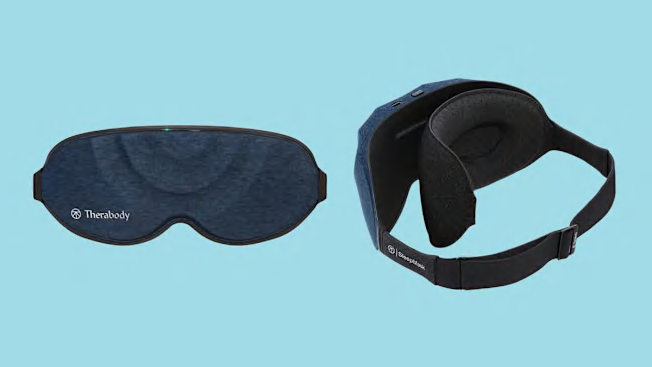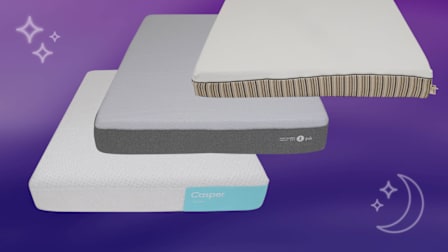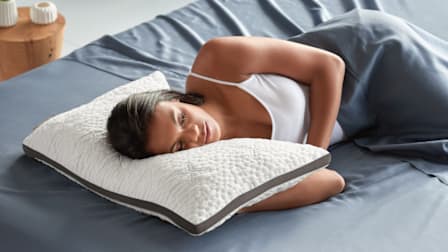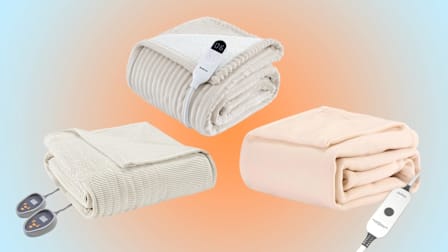We Tried It: The New Therabody SleepMask
How does the vibrating sleep mask work—and is it worth buying?
When you shop through retailer links on our site, we may earn affiliate commissions. 100% of the fees we collect are used to support our nonprofit mission. Learn more.

Having trouble sleeping? Join the club.
Data from the Centers for Disease Control and Prevention from 2020 show that 14.5 percent of adults have trouble falling asleep and 17.8 percent of them have trouble staying asleep. And in 2023, 57 percent of American adults told Gallup that they’d feel better if they got more sleep.
- The Therabody SleepMask: How It Works What We Liked (and What We Didn't)
- Can Sleep Masks Help You Sleep?
Shop for the Therabody SleepMask
Amazon, Best Buy, Dick’s Sporting Goods, Target, and Therabody
How the Therabody SleepMask Works
The Therabody SleepMask has a library of three vibration patterns, each with two intensities. You press a button at the top of the mask to turn on and switch through the vibrations to find a combination that feels best for you; vibrations turn off automatically after 15 minutes.
A library of white and pink noise is available on the Therabody app, so if you want to use that feature of the mask, you will need to wear headphones or earbuds as the mask itself doesn’t have speakers (this isn’t clearly disclosed anywhere that I could find on the Therabody SleepMask webpage, nor in its instructions). Alternatively, you could play the sounds on your phone’s speaker like a white noise machine.

Photo: Therabody Photo: Therabody
Can Sleep Masks Help You Sleep?
There’s a decent-sized body of data to show that sleep masks can actually help people sleep. Much of this research has been conducted in hospitals, where getting a good night’s sleep is notoriously difficult. A 2021 review and meta-analysis found that earplugs and eye masks, used either together or separately, increase the amount of time asleep and reduce wake-ups. A 2023 randomized control trial found that not only did sleep masks (and earplugs) improve patients’ sleep—it also made them feel less fearful and anxious.
There’s less evidence to indicate that vibrating sleep masks will do much for you, though. “My understanding is that no clinical study has examined the effect of facial vibrations on sleep outcomes,” says Jen Walsh, PhD, director at the Centre for Sleep Science at the University of Western Australia. But “it is important to note that such devices are unlikely to negatively impact sleep, and they may work in some people and not others.”
There’s some limited research to show that vibrations—in the bed itself—can help you sleep. A 2024 Frontiers study looked at how 27 participants with poor sleep quality reacted to a bed equipped with a motor that made it weakly vibrate. Participants slept better, according to both subjective and objective measures.
Still, according to Walsh, if you’re having trouble sleeping, it’s worth getting checked out by a doctor. “People who have ongoing difficulty getting to sleep or staying asleep, or wake feeling unrefreshed despite having adequate sleep, should speak with a primary care practitioner to investigate underlying causes and potential evidence-based solutions,” she says.




















